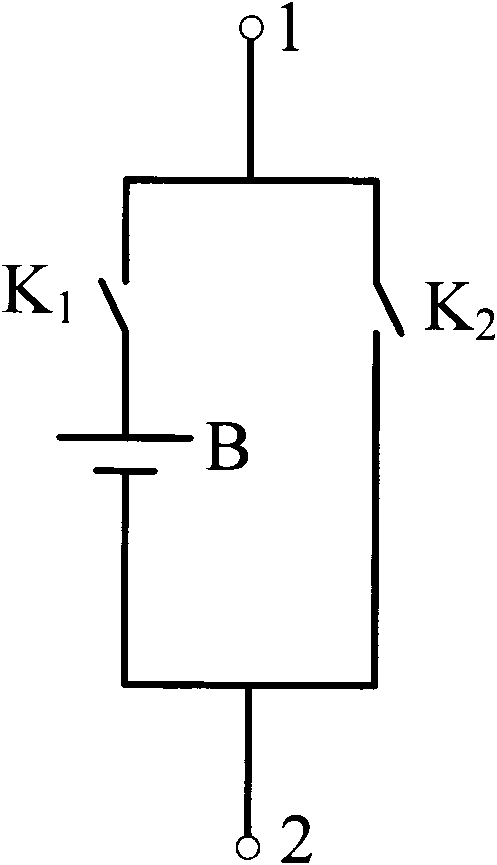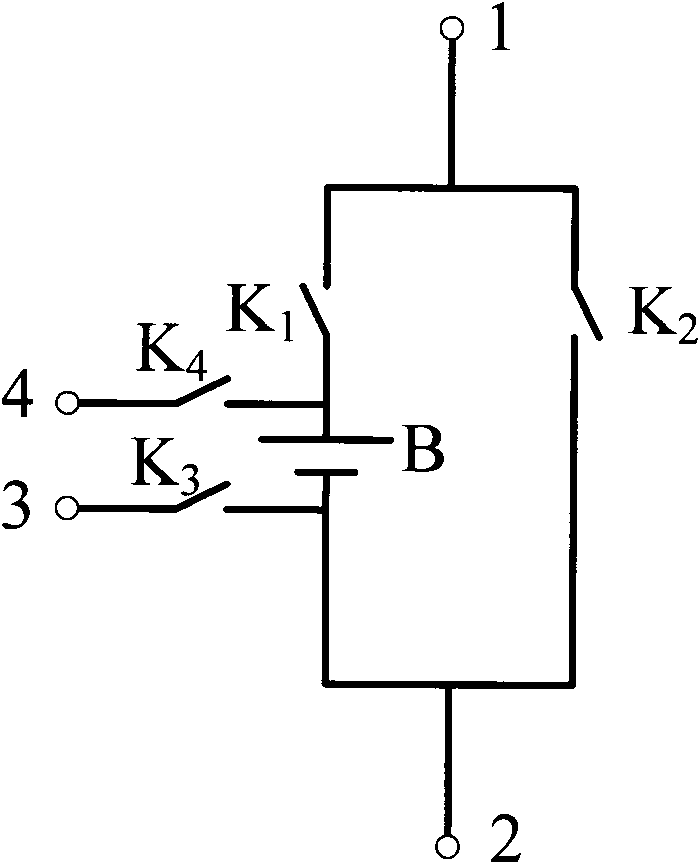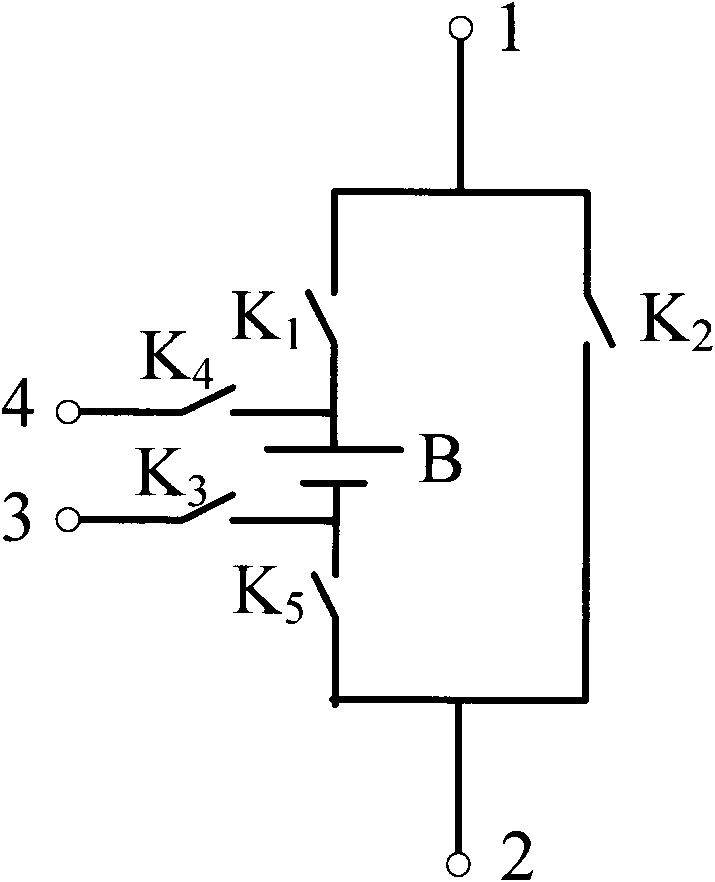An intelligent battery management system
A management system and intelligent battery technology, applied in battery circuit devices, current collectors, electric vehicles, etc., can solve problems such as waste and energy consumption, and achieve the effect of balancing differences, prolonging service life, and ensuring safety
- Summary
- Abstract
- Description
- Claims
- Application Information
AI Technical Summary
Problems solved by technology
Method used
Image
Examples
Embodiment 1
[0042] Figure 5 It is a schematic diagram of the system structure of this embodiment. Such as Figure 5 As shown, 100 is the basic unit, 200 is the slave control module, and 300 is the master control module. The basic unit 100 adopts the first type of basic unit. The intelligent battery management system includes multiple basic units 100, slave control modules 200, and a master control module 300; the slave control modules 200 regularly detect the voltage and current of the battery in the corresponding basic unit 100 through current sensors, voltage sensors, and temperature sensors , temperature and these states, and transmit the detection data to the MCU in the slave control module 200, and the MCU transmits the data to the MCU in the main control module 300 through wireless communication Zigbee, and the MCU in the main control module 300 stores The received information will display the SOC of the battery on the LCD, whether there is a fault, etc., and the MCU judges the ...
Embodiment 2
[0047]This embodiment is similar to the first embodiment, except that a current sensor and a thermistor are used to detect the battery in the basic unit, and an STC89C52 is used as the MCU. The chip has no built-in ADC and RF communication, and needs to be added externally. The model used by the ADC is ADC0809CCN, which is an 8-bit ADC with a measurement accuracy of 20mv at a reference voltage of 5V, and has 8 optional signal inputs; the RF communication uses ZigBee. The current sensor can be a Hall sensor, MR sensor, AMR, GMR, or TMR sensor. In this embodiment, a Hall ACS755LCB-050 is used, and the output signal is a voltage signal. Figure 8 It is a schematic circuit diagram of a basic unit and a slave control module of this embodiment. As shown in the figure, R 2 is a fixed resistor, R T It is a thermistor. When the temperature changes, the resistance of the thermistor changes, and the Vt obtained by dividing the voltage also changes. The signal V of the three analog se...
Embodiment 3
[0049] This embodiment is similar to the first embodiment, except that the second basic unit is used. The switch is a relay, and the battery is a nickel metal hydride battery. Since the second basic unit is used, the system can be charged in the same way as in the first embodiment when the system is in the charging state, or the batteries in each basic unit can be connected in parallel to realize parallel charging. The system is the same as that of embodiment 1 in the discharge state.
PUM
 Login to View More
Login to View More Abstract
Description
Claims
Application Information
 Login to View More
Login to View More - R&D
- Intellectual Property
- Life Sciences
- Materials
- Tech Scout
- Unparalleled Data Quality
- Higher Quality Content
- 60% Fewer Hallucinations
Browse by: Latest US Patents, China's latest patents, Technical Efficacy Thesaurus, Application Domain, Technology Topic, Popular Technical Reports.
© 2025 PatSnap. All rights reserved.Legal|Privacy policy|Modern Slavery Act Transparency Statement|Sitemap|About US| Contact US: help@patsnap.com



